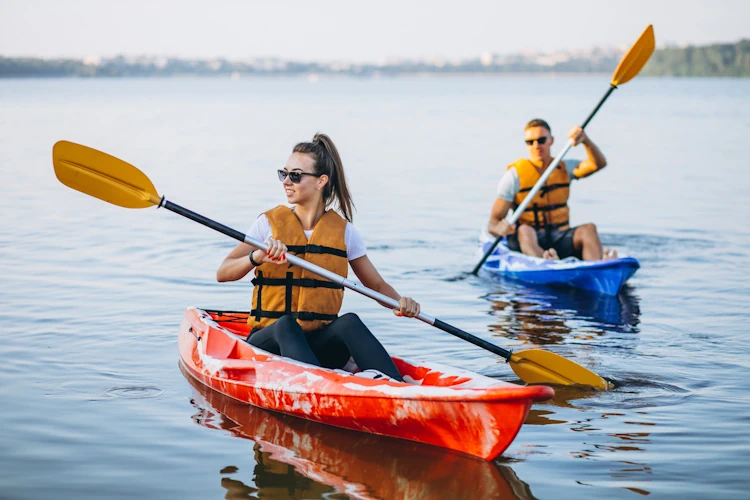The Ultimate Guide to Choosing the Right Kayak for Your Adventure
Kayaking is a fantastic way to connect with nature, explore waterways, and enjoy the great outdoors. Whether you’re a beginner or an experienced kayaker, choosing the right kayak is crucial to ensure a safe and enjoyable adventure. In this comprehensive guide, we’ll take you through the key factors to consider when selecting the perfect kayak for your needs.
Determine Your Kayaking Goals
Before you start shopping for a kayak, think about your kayaking goals:
- Are you looking for a leisurely paddle on calm lakes and rivers?
- Do you want to explore coastal waters and engage in sea kayaking?
- Are you interested in whitewater kayaking and navigating rapids?
- Will you be fishing from your kayak or using it for other specific activities?
Understanding your primary kayaking goals will help narrow down your options.
Types of Kayaks
There are several types of kayaks to choose from:
- Recreational Kayaks: These are ideal for beginners and casual kayakers. They are stable, easy to maneuver, and often come with comfortable seating.
- Touring Kayaks: Designed for longer trips, touring kayaks offer better tracking and efficiency. They are suitable for exploring large bodies of water.
- Sea Kayaks: Built for open water and rough conditions, sea kayaks are longer and narrower for increased speed and stability.
- Whitewater Kayaks: These kayaks are agile and built for navigating fast-moving rivers and rapids.
- Fishing Kayaks: Equipped with features like rod holders and storage, fishing kayaks are designed for angling adventures.
- Inflatable Kayaks: These are portable and great for travelers or kayakers with limited storage space.

Consider the Kayak’s Size
The size of your kayak matters for both comfort and performance:
- Longer kayaks track better and move faster, making them suitable for longer journeys.
- Shorter kayaks are more maneuverable and better for tight spaces or whitewater conditions.
- Wider kayaks provide stability, while narrower ones are faster but less stable.
Kayak Material
The material your kayak is made from affects its weight, durability, and performance:
- Plastic: Affordable and durable, plastic kayaks are great for beginners and are resistant to abrasions.
- Composite: These kayaks are lightweight, efficient, and offer better performance, but they are more expensive.
- Inflatable: Portable and easy to store, inflatable kayaks are perfect for travelers but may not provide the same rigidity as hard-shell kayaks.
Weight Capacity and Comfort
Ensure your kayak can handle your weight and any gear you plan to carry. Additionally, consider comfort features like padded seats and adjustable footrests for longer trips.
Storage and Accessories
Check the kayak’s storage options, including hatches and bungee cords for securing gear. Some kayaks come with built-in accessories like cup holders and rod holders, which can be convenient for specific activities.
Try Before You Buy
Whenever possible, test out a kayak before making a purchase. Many kayak shops offer rentals, allowing you to get a feel for different models on the water.
Budget Considerations
Set a budget for your kayak purchase. While quality kayaks are available at various price points, it’s essential to balance cost with your specific needs and goals.
Transportation and Storage
Consider how you will transport and store your kayak. Roof racks, trailers, and storage space are factors to account for.
Safety First
Don’t forget essential safety gear, including a personal flotation device (PFD), a paddle, and any additional equipment required for your specific type of kayaking.
In conclusion, choosing the right kayak is a crucial step in ensuring a rewarding kayaking experience. By considering your goals, the type of kayak, size, material, weight capacity, comfort, storage, and budget, you’ll be well on your way to selecting the perfect kayak for your next adventure. Happy kayaking!